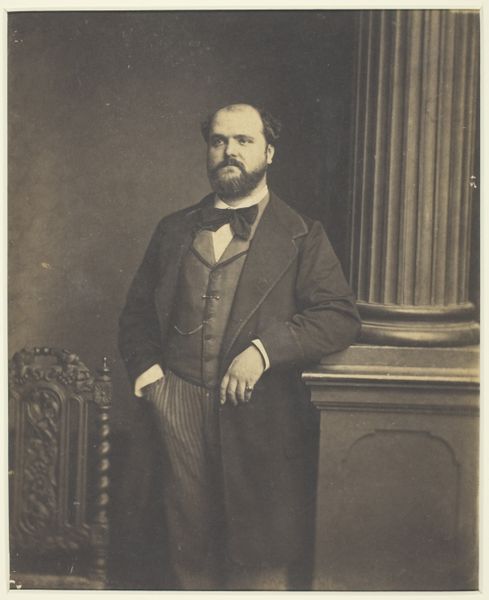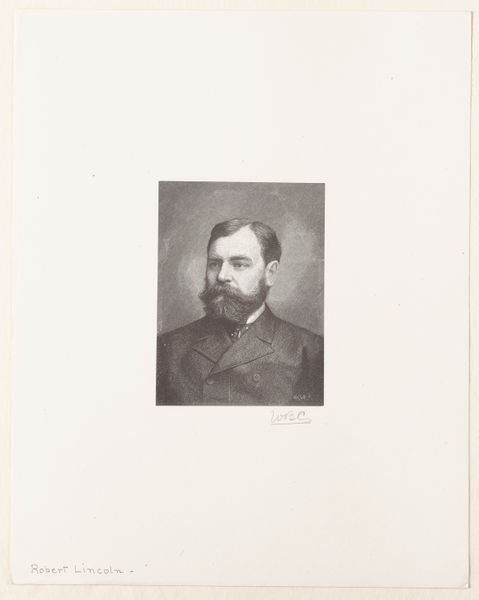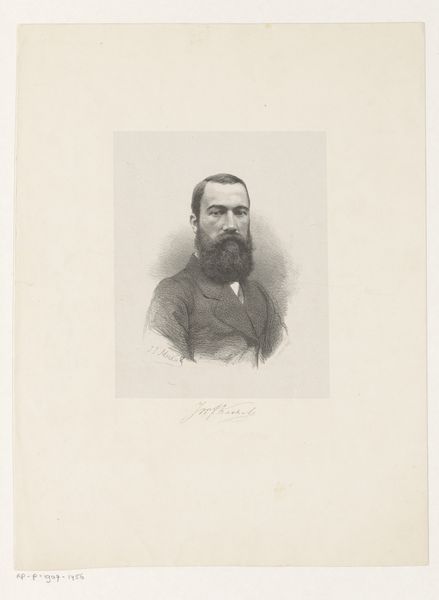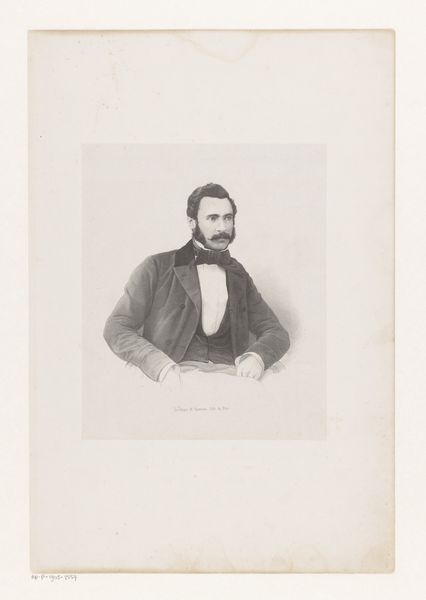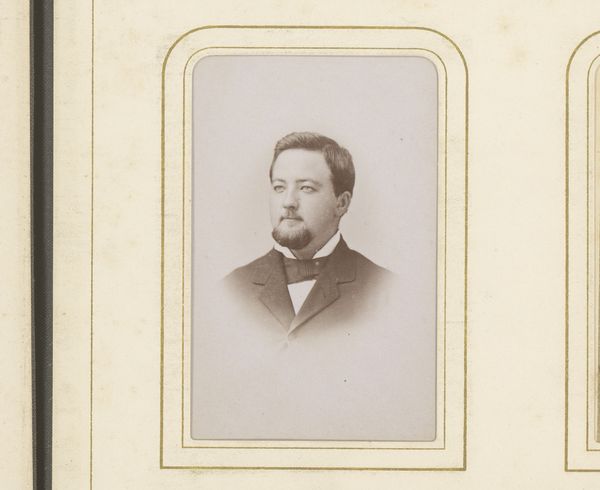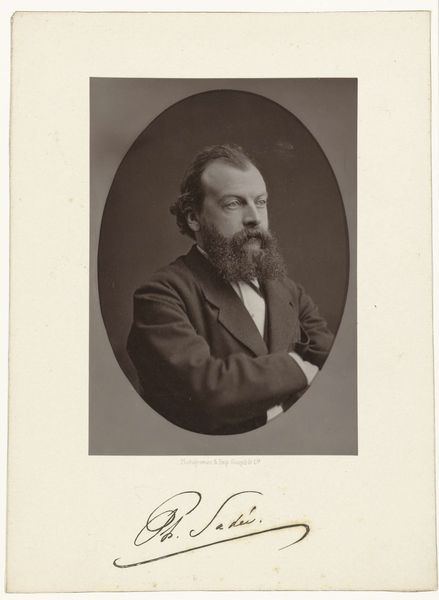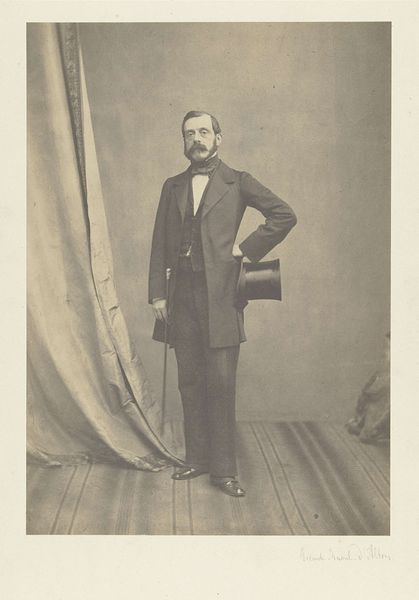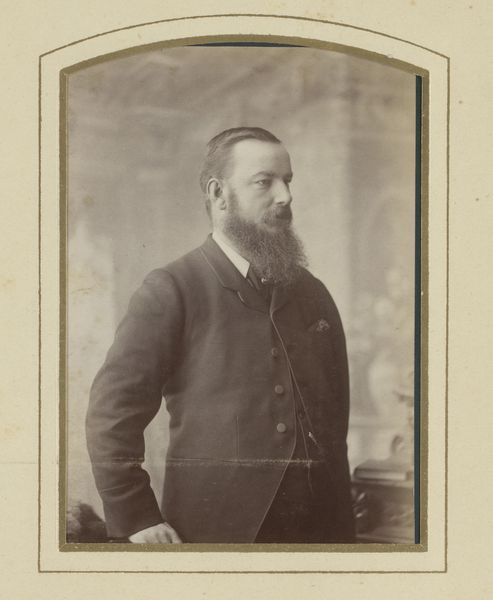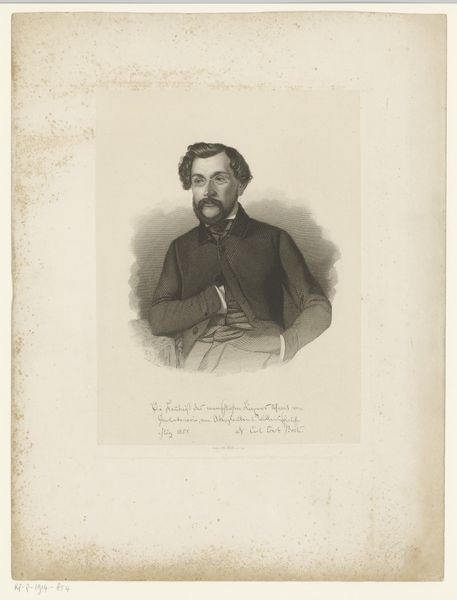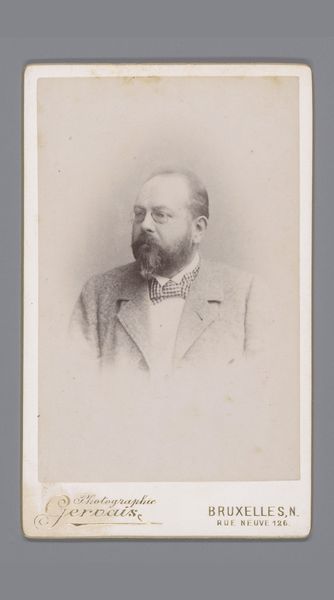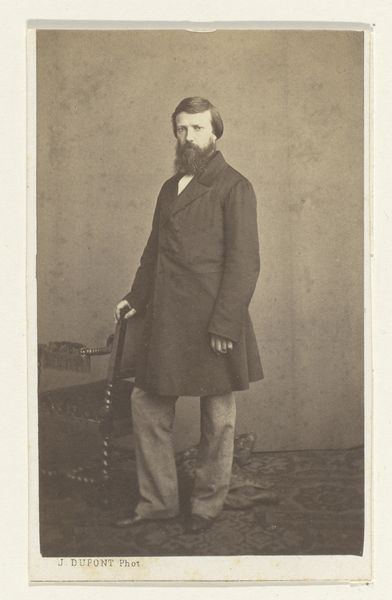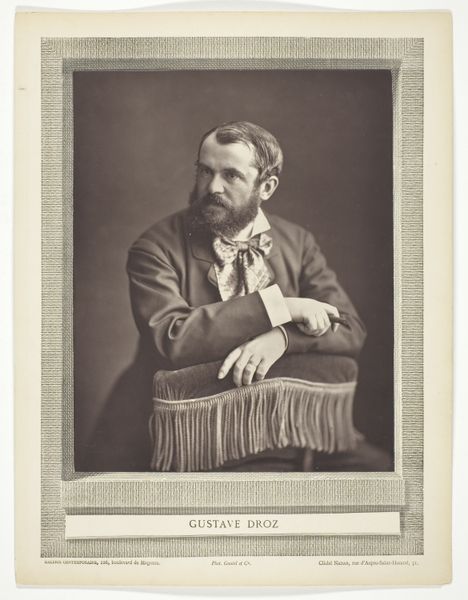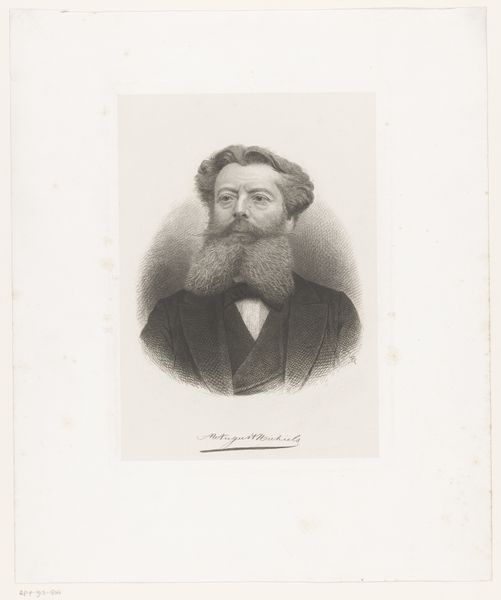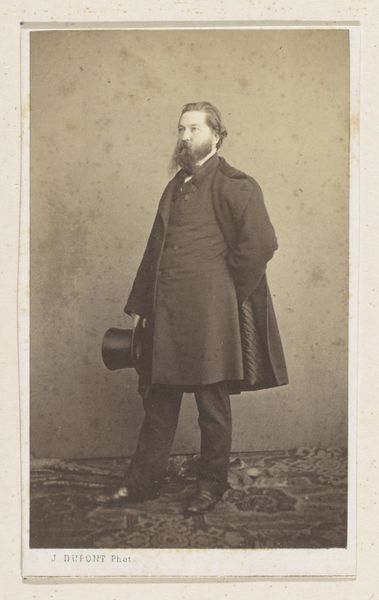
Félix Henri Bracquemond (French painter and printmaker, 1833-1914) 1975 - 1978
0:00
0:00
Dimensions: 23.2 × 18.3 cm (image/paper); 34.1 × 25.9 cm (mount)
Copyright: Public Domain
Editor: Here we have a gelatin silver print from 1875-1878, a portrait of Félix Henri Bracquemond. There's something striking about its stillness; he looks almost defiant. What do you see in this piece, especially considering Bracquemond's position in the art world at the time? Curator: I see a portrait that challenges the conventional artistic hierarchy of its time. Bracquemond was a key figure in championing the status of the "decorative arts" against the traditional dominance of painting and sculpture. So, this portrait becomes not just an image of a man, but a statement of artistic intent and a commentary on cultural value. Editor: So, you're saying it's a political act, of sorts, simply to present himself this way? Curator: Precisely. Consider the rise of Impressionism alongside the Industrial Revolution. Bracquemond advocated for artistry in everyday objects, pushing back against the notion that only "fine art" held cultural merit. The image is evidence, isn't it? And notice the composition; it echoes the formal portraiture usually reserved for the elite. In what way do you think the photographic medium relates to that democratization? Editor: That’s fascinating. The photography, instead of painting, creates a sense of immediacy and accessibility. I guess I hadn't considered it in relation to his artistic beliefs. Curator: Exactly! Think about photography's accessibility versus the elitism of painting at that time. It's a deliberate choice that aligns with his desire to democratize art. So, what begins as a face becomes a banner, representing a shift in cultural perspective. Editor: I'm starting to see the photograph as a conscious manifesto now. It has definitely shifted my initial impression. Curator: And hopefully encouraged us to examine how social contexts continually shape our understanding and interpretation of artworks.
Comments
No comments
Be the first to comment and join the conversation on the ultimate creative platform.
